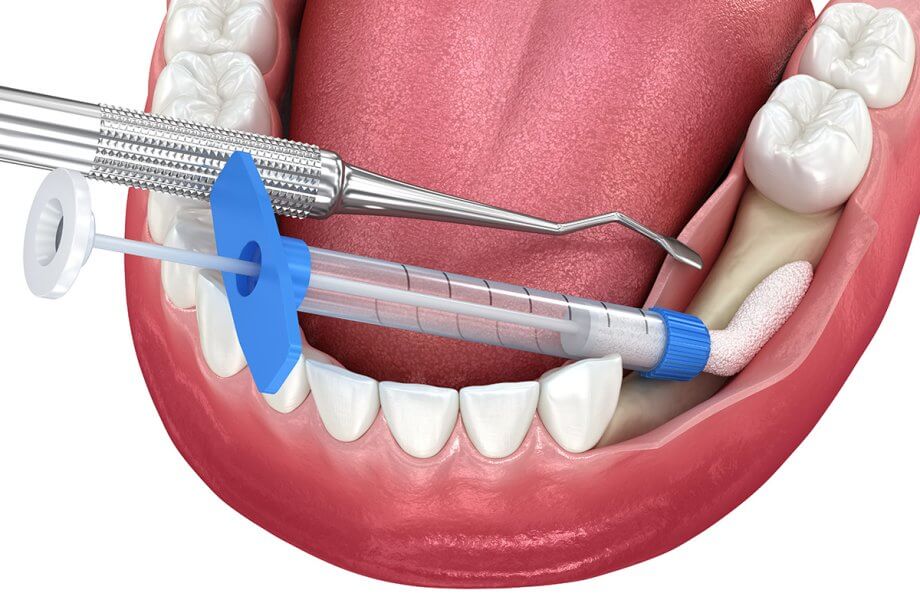You may have been told that you'll need bone grafting before getting dental implants if you've been missing teeth for a long time or have a history of periodontitis. This is because when teeth are lost, the bone structure that once supported them deteriorates. To effectively replace missing teeth, dental implants rely on the jawbone for support. Dental bone grafting is used to restore the jawbone in order to give dental implants the support they need to be successful.
Why Bone Grafts Are Needed
When we bite and chew, the roots of the teeth stimulate the jawbone. If teeth are extracted or fall out, the jawbone no longer receives stimulation from the roots. This tells the body that the jawbone in this location is no longer needed to support teeth, and the body begins to break it down so its minerals can be put to use elsewhere. Resorption weakens the jaw and can cause facial collapse, which makes you appear older than your years as your face loses bone support and structure.
Periodontal disease can also induce bone resorption. Gum disease can spread to the supporting bone and tissue that surrounds the roots if it is not treated in its early stages. As the infection attacks these supporting structures, they begin to weaken and break down. If you have active gum disease, you'll need to get it treated before getting dental implants, and you may also need bone grafting to restore weakened areas of your jawbone.
What Happens During a Bone Grafting Procedure
Bone grafts are used to replace missing bone in the jaw after gum disease or tooth loss. These bone grafts can be taken from a patient's own body, but they're more commonly obtained from a bone bank. We consider this type of bone grafting a minor surgical procedure, and it is performed in our office, often under local anesthesia and/or mild sedation.
A small incision is made in the gum tissue near the bone that needs to be restored. The graft is placed in the weakened area of the jawbone through this incision in order to encourage your body to generate new bone where it is needed. The graft and your own bone will eventually fuse, forming a stable foundation for your dental implants.
The process of bone regeneration can take several months. To confirm bone development, we will take x-rays to view your jawbone. You won't be able to have dental implant surgery until we know the grafts have been successful; having enough jawbone to support implants is crucial for the success of your dental implant surgery. Without this support, the implants may begin to move, become loose, or even fall out.
Learn More About Bone Grafting
Do you need dental bone grafting before getting dental implants? If you’d like to learn more about the procedure, contact us today.


